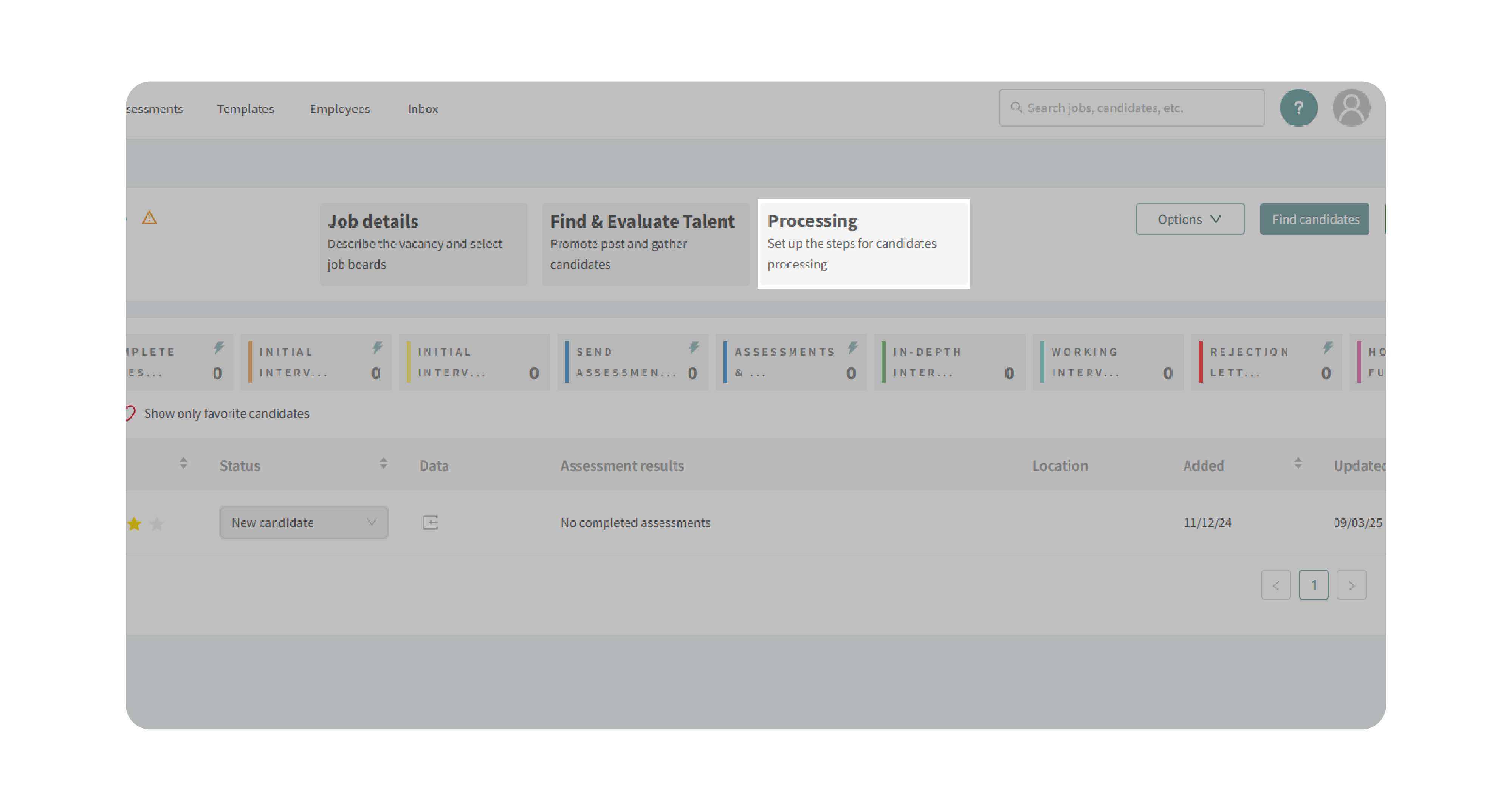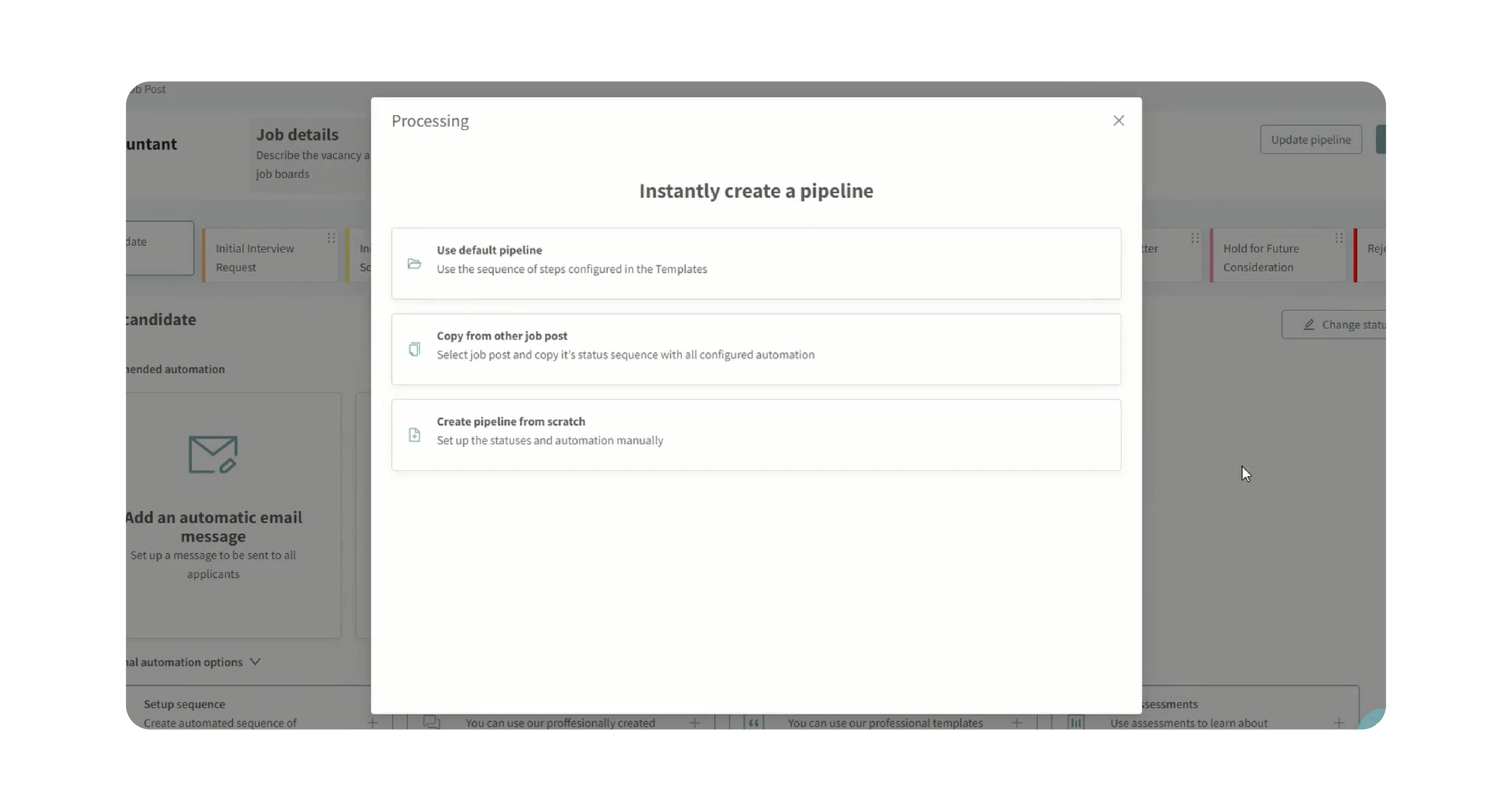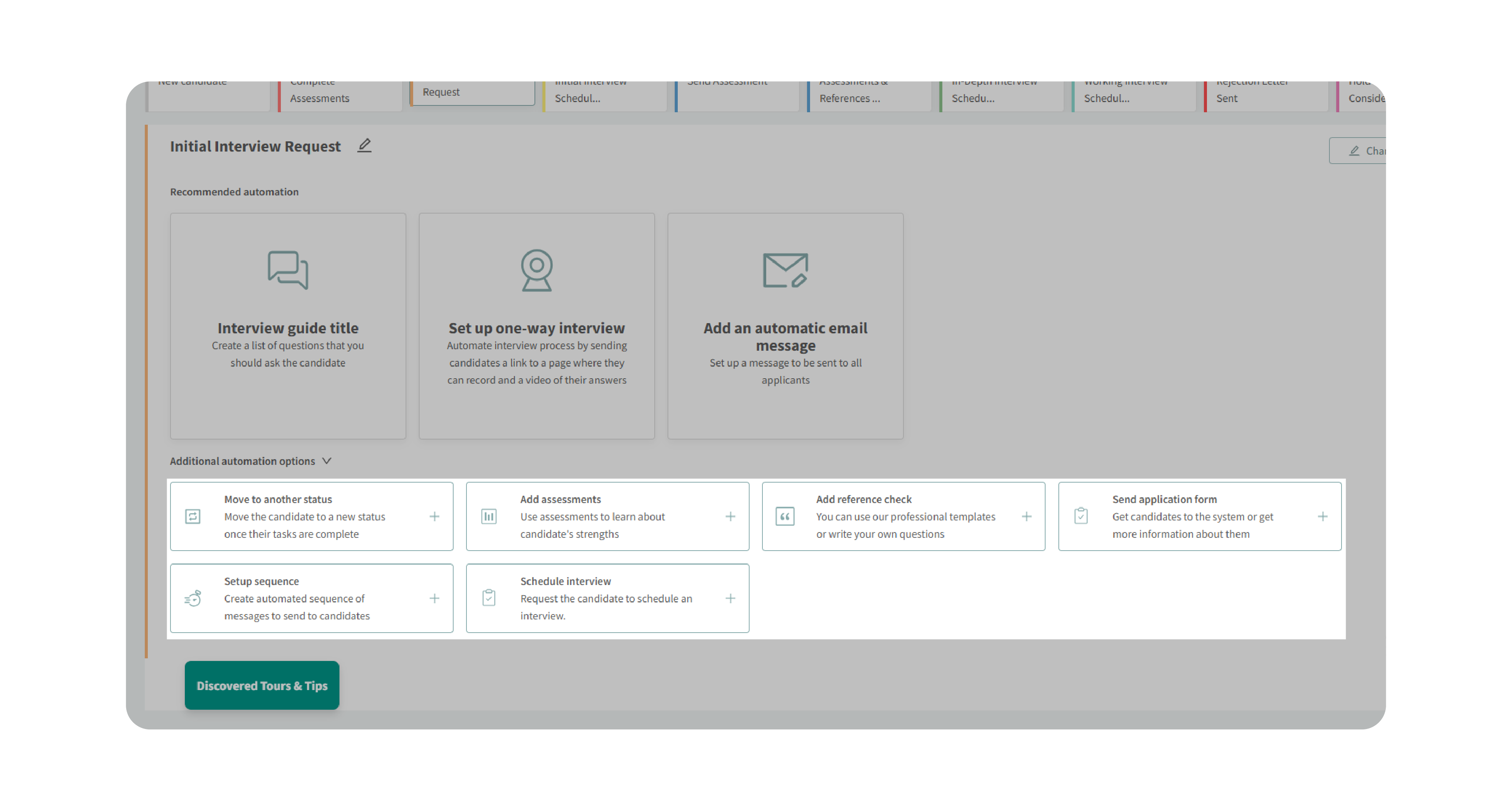Set Candidate Statuses & Defaults
Overview
Hiring can get messy, especially when multiple candidates are moving through different stages of your jobs. To keep the process structured, Discovered uses statuses to indicate where each candidate is in the hiring journey. Within the Processing tab of your job posting, you can configure and manage these statuses to align with your team’s workflow.
Statuses not only provide clarity on candidate progress but can also trigger automations such as sending interview requests or rejection messages. With a combination of default and custom statuses, you can tailor your pipeline to match your hiring needs.
How to Set Candidate Statuses & Defaults:
1. Navigate to the Job Posting
- Open the job posting where you want to add candidates.
- Select the Processing tab in your job posting menu.

2. Select Pipeline Option
You’ll be prompted to choose how to set up your pipeline:
- Use Default Pipeline – Automatically applies statuses based on how they’re configured in the Templates section of your account.
- Copy Pipeline from Another Job – Replicates a pipeline you’ve already used on a previous job.
- Create Pipeline from Scratch – Starts you off with basic default statuses like New Candidate and Hired, giving you freedom to build the rest.
- Click on Your Preferred Option – This will generate your pipeline according to the selection.

3. Utilize Automations
Assign automations to each status, such as:
- Sending interview invitations.
- Delivering rejection messages.
- Sharing scheduling links.
Automations ensure consistent communication and reduce manual tasks.

4. Work with Default Statuses
Some statuses are built-in and cannot be removed:
- New Candidate – Automatically assigned when someone first enters the pipeline.
- Rejected – Marks candidates who are no longer under consideration.
- Offer Sent – Used when you’ve extended a job offer.
- Hired – Assigned when a candidate accepts the offer; always appears as the final step.
Why This Matters:
Statuses keep your hiring process organized, transparent, and consistent. By assigning candidates to statuses, you always know where they are in the process and what actions come next. Automations tied to statuses further reduce manual effort, ensuring timely communication with applicants.
Use Cases:
- Recruiters: Track candidate progress and send bulk updates automatically.
- Hiring Managers: Standardize evaluation stages across multiple roles.
- Agencies: Replicate proven pipelines across client job postings.
- Small Teams: Simplify candidate management with ready-to-use default pipelines.
Best Practices:
- Familiarize yourself with status definitions to use them effectively.
- Regularly update candidate statuses to keep your pipeline accurate.
- Take advantage of automations to streamline candidate communication.
- Remember: New Candidate and Hired statuses cannot be reordered, as they define the first and last steps in your process.
What Happens Next:
Once your statuses are configured:
- New applicants will automatically be placed in the New Candidate status.
- As you evaluate candidates, you can manually update their status to reflect progress.
- Automations you’ve set up (e.g., interview requests, rejection emails) will trigger as candidates move through statuses.
- Hired candidates remain documented in the system for reporting and future reference.
With statuses and default pipelines, you can ensure every job follows a structured, repeatable hiring process while minimizing manual work.
